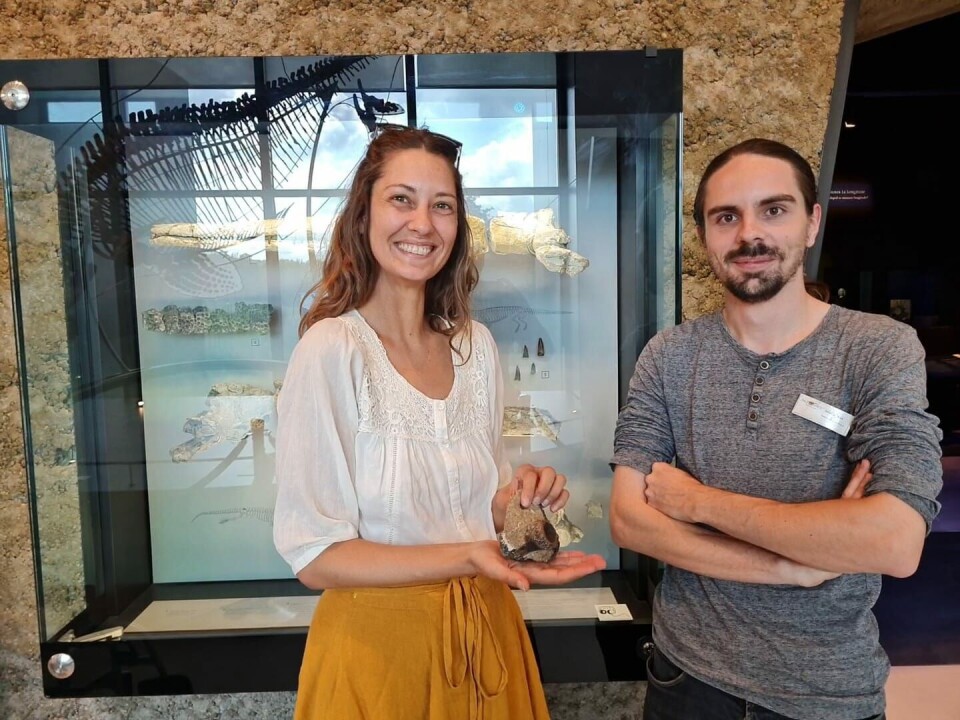-
Free fraud service for UK homeowners living in France
Owners are encouraged to sign up for a free monitoring service from HM Land Registry to reduce risk
-
New civic tests for foreigners in France launch amid criticism
Applicants for some types of residency cards must now take 45-minute test
-
Workers in France can take 17-day break using only eight days of leave in 2026
Favourable calendar for public holidays makes extended May break possible, with five guaranteed long weekends throughout year
Artist on walk finds 168 million year-old fossil on French beach
The crocodile vertebra – confirmed to be from the Jurassic era – is thought to have been ripped from a cliff in Normandy by recent storms

An illustrator on holiday looking for inspiration found it – by stumbling upon a 168 million year-old fossil of a crocodile’s vertebra on a Normandy beach.
Laura Crevel-Floyd was walking on Juno beach with her Irish-born husband when she spotted the rock, later found to be a crocodile vertebra.
The fossil was half-buried in sand and she had to forcefully pull it out. Upon inspection, she immediately saw that it was no ordinary pebble.
“I have an eye for this type of thing,” she said. “I’m always looking for algae or sea shells to inspire my art, so this piece of rock stood out to me immediately.”
After finding the fossil, Ms Crevel-Floyd brought it to an archeologist friend, who redirected her to the Paleontological centre of Villers-sur-Mer. Palaeontologist Jonas le Mort was able to confirm that the fossil was a crocodile vertebra from the Jurassic period.
“These are salt–water crocodiles that used to live much further off the coast,” she said. “And we were really lucky: if I’d been there just ten minutes later, then the tide might have washed it into the ocean!”
The find is especially valuable because most crocodile fossils found in this region have been lost during World War Two. In 1944, the Caen museum where they were stored was destroyed by bombings.
The stone in which the fossil was set was able to help palaeontologists determine its original location, the cliff of Lions-sur-Mer, about 10 kilometres east of Juno Beach. They believe that a storm knocked it into the water and it was swept onto the beach, right in front of the Canadian soldiers memorial.

In the steps of J.M.W. Turner
Ms Crevel-Floyd said that one of her role models was 19th century English painter J.M.W. Turner who, like her, painted in watercolour and visited Normandy’s beaches for inspiration.
Even in Turner’s time, Normandy was known for its fossils: the cliffs of Vaches Noires – about an hour’s drive east of Juno Beach – has been known as a spot for fossil hunters since the 18th century.
Read more: This website shows the geological curiosities near you (including fossils)
It is common for children in Normandy to go on school trips to a nearby hotspot for fossils. 168 million years ago, the entire region was underwater, which is why ammonites fossilised in limestone can be found in many areas.
Ms Crevel-Floyd, now back home in Aix-en-Provence, has not yet decided what she will do next with the fossil. She said that she was in touch with several palaeontologists who would like to study it further.
Related articles
Can I take souvenirs, pebbles and sea glass, from a French beach?
Which fish is biting (a few) holidaymakers on France’s southern coast?
























